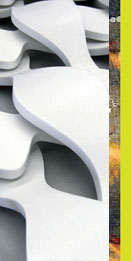 Full Conference Full Conference |
 Full Conference One-Day Full Conference One-Day |
|
 フルカンファレンス フルカンファレンス |
 1日券 1日券 |
Theory and Methods of Lightfield Photography
Wednesday, 16 December | 5:30 AM - 9:15 AM | Room 511/512
Lightfield photography is based on capturing discrete representations of all light rays in a volume of 3D space. Compared to conventional photography, which captures 2D images, lightfield photography captures 4D data. To multiplex this 4D radiance onto conventional 2D sensors, lightfield photography demands sophisticated optics and imaging technology. The final image rendering is based on creating 2D projections of the 4D radiance. This course presents lightfield analysis in a rigorous mathematical way, which often leads to surprisingly direct solutions. The goal is simplicity. The course emphasizes underlying fundamental ideas. The mathematical foundations are used to develop computational methods for lightfield processing and image rendering, including refocusing and perspective viewing. While emphasizing theoretical understanding, the course also demonstrates practical approaches and engineering solutions for the discussed problems. The course includes a hands-on demonstration of several working lightfield cameras that implement different methods for radiance capture, including the micro-lens approach of Lippmann and the plenoptic camera, the mask- enhanced "heterodyning" camera, the lens-prism camera, multispectral and polarization capture, and the plenoptic 2.0 camera. Various computational techniques for processing captured data are demonstrated, including Ng's Fourier slice algorithm, the heterodyned light-field approach for computational refocusing, rendering, glare reduction, and others.
Level
Intermediate
Presentation Language
Presented in English
Prerequisites
Basic knowledge of ray optics, image processing, linear algebra, and programing. Deeper involvement in one or several of those areas is a plus, but not required to understand the course.
Instructor(s)
Todor Georgiev Adobe Systems Incorporated Andrew Lumsdaine Indiana University
Instructor Bio(s)
Todor Georgiev A senior research scientist at Adobe, Todor Georgiev works closely with the Photoshop group. With his extensive background in theoretical physics, he concentrates on applications of mathematical methods taken from physics to image processing, graphics, and vision. He is the author of the Healing Brush tool in Photoshop (2002), the method better known as Poisson image editing. He works on theoretical and practical ideas in optics and computational photography, including light-filed cameras and capture and manipulation of the optical field. He has a number of papers and patents in these and related areas.
Andrew Lumsdaine Andrew Lumsdaine received his PhD degree in electrical engineering and computer science from the Massachusetts Institute of Technology in 1992. He is presently a professor of computer science at Indiana University, where he is also the director of the Open Systems Laboratory. His research interests include computational science and engineering, parallel and distributed computing, mathematical software, numerical analysis, and radiance photography. He is a member of the IEEE, the IEEE Computer Society, the ACM, and SIAM.


